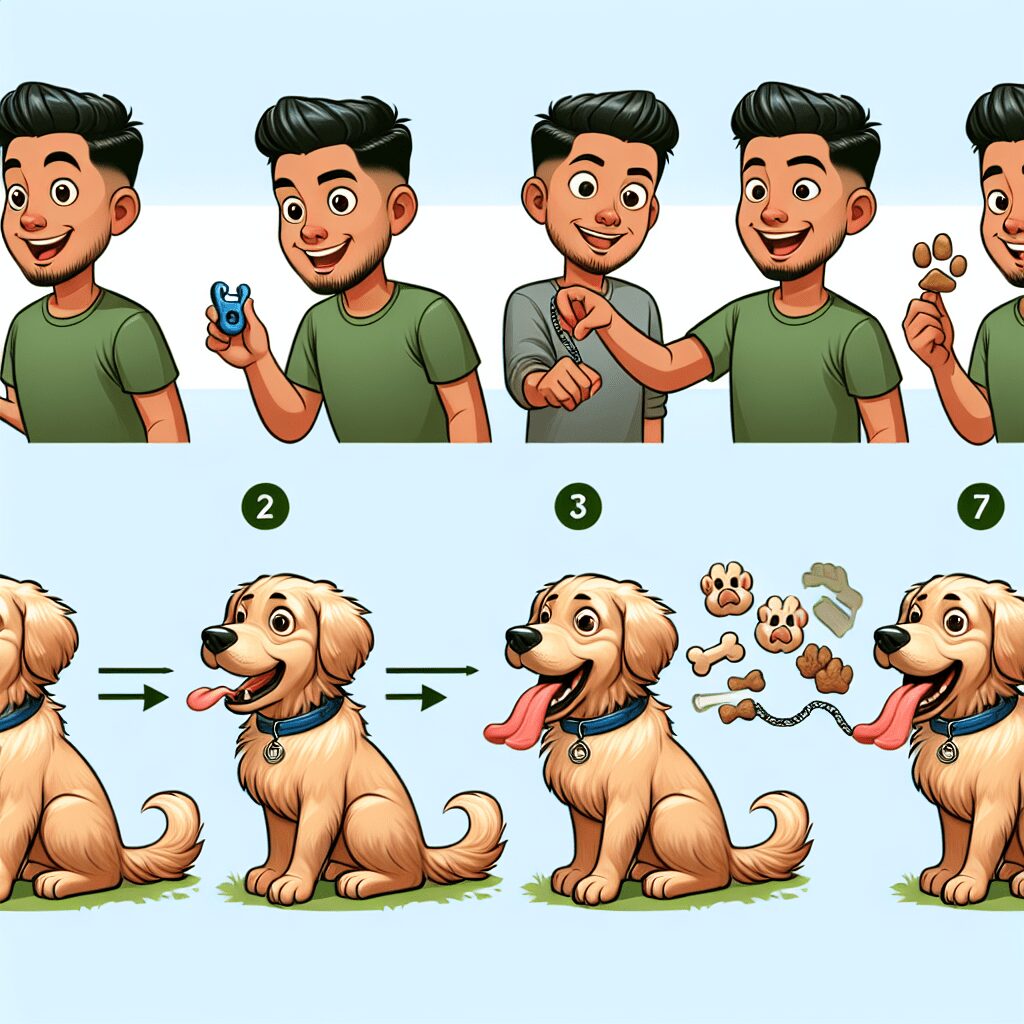Bark No More: Essential Training Tips for a Quieter Canine Companion
As a veteran dog trainer and a devoted dog lover, I know how important it is for our canine companions to be calm and content. When our pups bark incessantly, it can not only disrupt our peace but also cause stress for them and their surroundings. Thankfully, with a sprinkle of patience and an understanding approach, we can turn our vocal pooches into serene sidekicks. In this blog post, we will explore some real-world solutions to help your furry friend bring the bark volume down.
Understanding Canine Communication: Why Do Dogs Bark?
To train your dog to bark less, it’s essential to understand why they bark in the first place. Dogs communicate through a variety of vocalizations, and barking is one of their primary modes of expressing themselves. Here are some common reasons why your canine companion might be barking:
- Alerting: Dogs often bark to alert us of something they perceive as unusual, such as a strange sound or presence.
- Boredom: If your dog is bored and lacks stimulation, they might resort to barking to get your attention or relieve their boredom.
- Separation Anxiety: Dogs can experience anxiety when left alone, leading them to bark as a way to express their distress.
- Playfulness: Sometimes, barking is an invitation to play or engage with you or other dogs.
- Fear or Stress: Your dog may bark when frightened, whether it’s due to thunderstorms, loud noises, or unfamiliar situations.
Identifying the underlying cause of your dog’s barking is the crucial first step in reducing it effectively.
Practical Strategies for Curbing Excessive Barking
Now that we understand the reasons behind barking, let’s dive into some practical strategies for mitigating this behavior. Each dog is unique, so don’t hesitate to tailor these methods to suit your furry friend.
-
Positive Reinforcement: Reward quiet behavior with treats or affection. Praise your dog when they remain calm, reinforcing that silence earns them goodies!
-
Desensitization: If your dog barks at specific triggers (like the mailman or other dogs), gradually expose them to the trigger in a controlled manner. Start at a distance and work closer, rewarding calm behavior.
-
Exercise: A tired dog is a happy, quiet dog! Ensure your pup gets adequate physical and mental exercise. Play fetch, take longer walks, or invest in puzzle toys.
-
Create a Peaceful Space: Designate a calming area in your home for your dog, complete with comfortable bedding and some of their favorite toys. This can be a safe haven to retreat when they need to unwind.
-
Use Command Training: Teach commands like “quiet” or “enough.” When your dog barks, wait for a moment of silence, then reward them with praise or a treat.
-
Consistency is Key: All family members should be on the same page regarding training methods and commands. Consistency will help your dog learn faster.
-
Professional Help: If excessive barking continues, consider seeking help from a professional dog trainer. An expert can provide personalized strategies tailored to your dog’s specific needs.
-
Calm Them Down: Utilize calming products like anxiety wraps, calming sprays, or pheromone diffusers to ease your dog’s anxiety, especially during stressful situations.
-
Redirect Attention: If your dog barks out of boredom or to get your attention, redirect them to a toy or activity to keep them engaged.
-
Time-Out Technique: If barking becomes overly disruptive, a short time-out in a designated area may help. This teaches them that barking leads to isolation from the group.
The Importance of Building a Strong Bond
Our dogs thrive on connection and affection. Building a strong bond with your furry friend can significantly reduce unwanted barking. Spend quality time with them, engage in training sessions, and enjoy interactive games that strengthen your relationship. When your dog feels secure and loved, they’re less likely to bark out of anxiety or boredom.
FAQs: Your Barking Questions Answered
Q1: How long will it take to reduce my dog’s barking?
A: The timeline varies for each dog, but consistency and patience are key. With application, you may see improvements within weeks.
Q2: Are certain dog breeds more prone to barking?
A: Yes, some breeds are naturally more vocal than others. Breeds like Beagles and Terriers are known for their barking habits.
Q3: Can I completely eliminate my dog’s barking?
A: Barking is a natural form of communication for dogs. Instead of aiming for complete silence, focus on finding a balance that works for you and your dog.
Q4: Is it normal for puppies to bark a lot?
A: Yes, puppies bark frequently as they explore their environments and communicate. Training early can help manage this behavior.
Q5: Should I punish my dog for barking?
A: Punishment can lead to fear and anxiety. Instead, focus on positive reinforcement and encouraging quiet behavior.
Let’s work towards a quieter world with our furry companions! Remember, training takes time and patience, but the rewards of a calmer, more obedient dog are immeasurable. Together, we can embark on this journey, making our homes more peaceful and ensuring our pups are happy.
Unlock the Secrets to a Well-Behaved Dog! 🐾 Tired of your pup’s bad habits? Discover how to transform your unruly dog into a loving companion with our FREE Dog Training Mini Course! Learn essential commands, potty training tips, and effective techniques to eliminate unwanted behaviors in just days. Don’t miss out—sign up now and start your journey to a happier, obedient dog! Join Here! (https://bit.ly/3RJak0a),
Instantly Access Your FREE Children’s Books Here! (https://payhip.com/BlueCherryStore)
Disclaimer: As an Amazon Associate, I earn from qualifying purchases, I may earn a commission from qualifying purchases as an affiliate. Please note that I only recommend products I believe will provide value to my readers.
With the right techniques and a loving approach, we can make the world a quieter place—one bark at a time!









